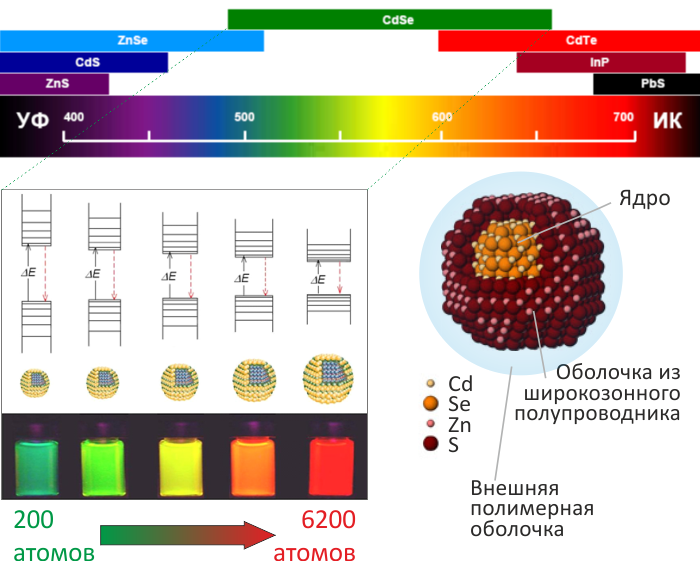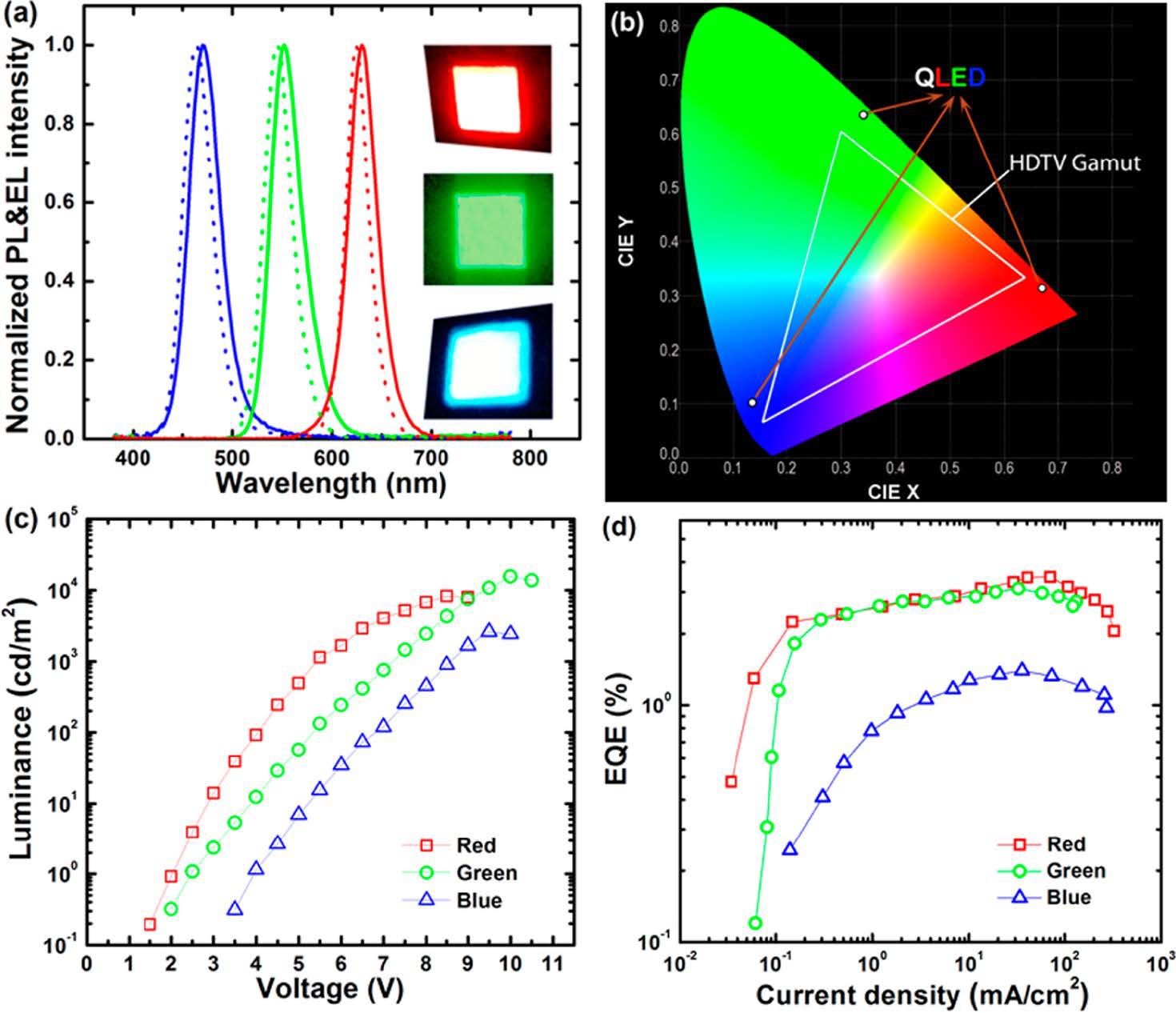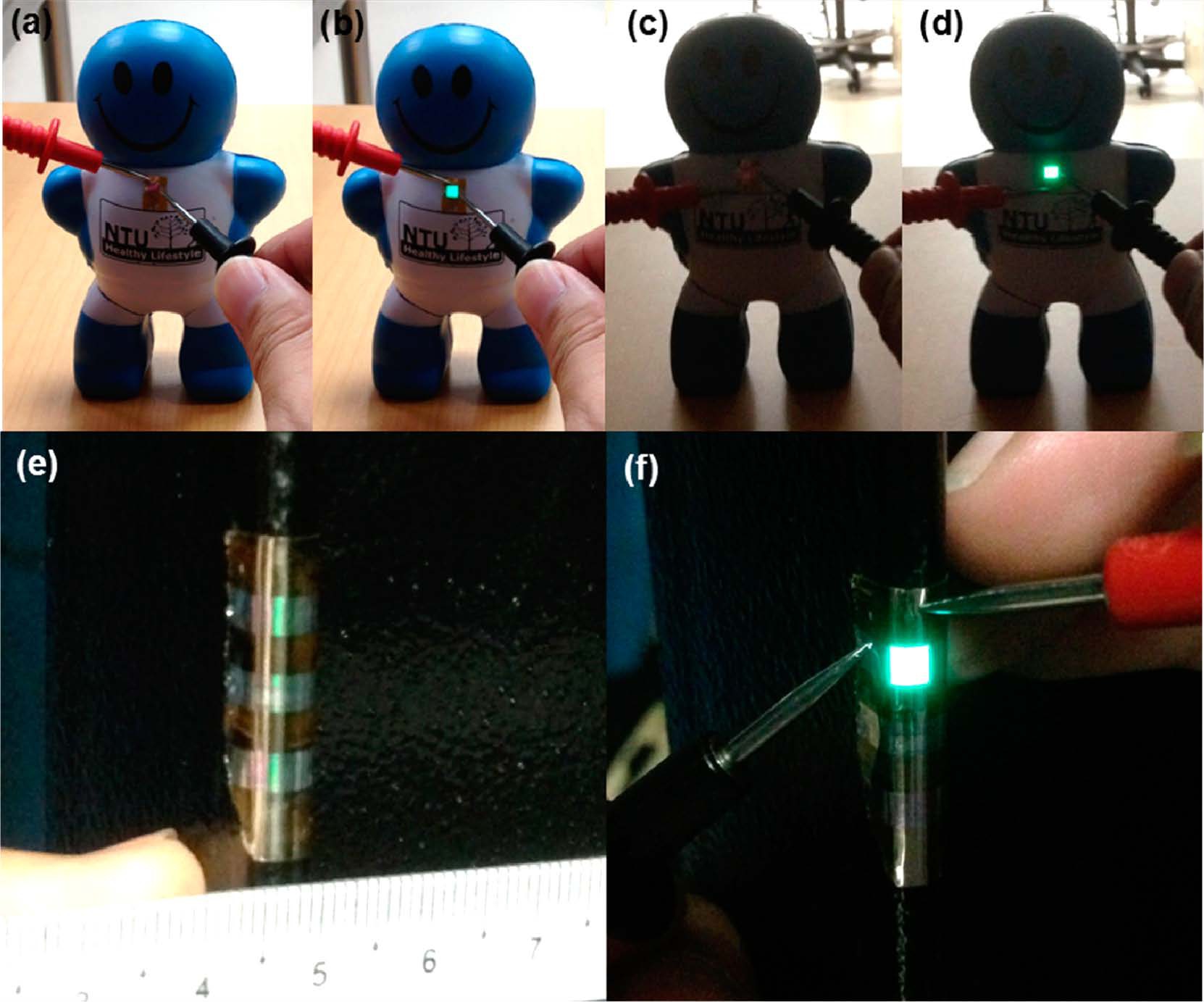This is Science: Resilient quantum dot display

In microelectronics, there has been a noticeable bias or, if you will, a trend towards various flexible solutions that do not require substrates made of glass or silicon (for example, flexible electronics based on polysilicon ). So the displays were no exception , even such exotic ones as displays on quantum dots.
So, what is this wonderful object such a quantum dot? If we take a piece of semiconductor (silicon or cadmium sulfide, for example) and begin to crush it in the dark under a violet lamp, then at some point we will see luminescence. In this case, the smaller the particle size of a semiconductor or quantum dot , the shorter the luminescence wavelength we can observe (shift to the blue region of the spectrum). This phenomenon is explained by an increase in the band gap of a semiconductor with a decrease in the size of the nanoparticle. A similar phenomenon will be observed if we connect the quantum dot to the battery, and it is called electroluminescence . Highlighting your clock is likely to work on this effect.
')

The forbidden zone of a semiconductor or the diameter of a nanoparticle and the color of a solution of core – shell nanoparticles, as well as a range of materials for the manufacture of quantum dots with specified optical properties. A source
Thus, in order to obtain red, green or blue colors, we do not need to develop new materials and technologies for their application, as, for example, it was with OLED-displays. Instead, we can synthesize 3 different solutions and simply mix them to get the specified color or use them separately to create display pixels. Accordingly, scientists from the very discovery of quantum dots at the dawn of the 90s began to think about using them in displays, especially after the successful implementation of LCD matrices.
However, it turned out to be not so easy to implement, and up until the beginning of the zero, the real prototype of working pixels or the whole display simply did not exist. Just a couple of years ago in 2011, Samsung, having become interested in new types of displays, conducted a series of surveys, which made it possible to create a full QLED ( quantum dots light emitting diode ) display.
In a recent paper published in ACSNano magazine, a group of scientists from Singapore and Turkey presented the concept of a very flexible display on quantum dots, which - who knows - maybe in a couple of years will be announced along with the new Samsung 7, for example.
The main problems of creating such displays: a limited range of suitable materials and poor mechanical resistance to bending and twisting. However, the use of polyimide, Kapton , allows you to solve some problems, optimize the process and get quite large (square millimeters) QLED output with a brightness of 20,000 cd / m 2 , which today is a record in the field of flexible quantum dot diodes.

(a) Scheme developed by QLED (layers from top to bottom: polymer film from Kapton / Al / ZnO nanoparticles / CdSe-CdS-ZnS quantum dots / polymer TCTA / MoO 3 / Ag), (b) AFM image of the resulting film, (c) diagram of electronic levels and (d) working QLED
The mechanical properties of the device obtained are so good that it can be used as a sticker, sticking and peeling off several times, and also bending in all possible directions (brightness in relative units drops not significantly, not more than 5%). As for the optical characteristics, the manufactured diodes passed the test, demonstrating a maximum brightness of 20,000 cd / m 2 with an external quantum efficiency of 4%.

(a) Normalized electroluminescence spectra for fabricated diodes, (b) RGB spectrum coverage in CIE coordinates (for comparison, similar coverage is given for the HDTV standard), (c) brightness and (d) external quantum yield of diodes
And in conclusion, for example, I will give a demonstration of the work of diodes in real, so to speak, field conditions:

Demonstration of QLED operation on flat (ad) and curved surfaces (ef)
Original article in ACSNano (DOI: 10.1021 / nn502588k)
PS: LeoMat suggested that Apple filed 3 patents for QLED displays at the very end of 2013.
Full list of published articles This is Science on GeekTimes:
This is Science: Simple and Cheap Solar Energy
This is Science: Is graphene life or death?
This is Science: Blow and Get Electricity
This is Science: Silicon Electronics: Bend Me Completely!
This is Science: Resilient quantum dot display
This is Science: Putting triboelectricity at the service of humanity
This is Science: 3D optical printing moves to the micro level
This is Science: What's inside a neuromorph chip?
This is Science: News from graphene fields
This is Science: 3D lithography to masses
This is Science: The discharge of alkaline batteries or why the battery jumps
This is Science: microcannons and nano-core
This is Science: wearable electronics and triboelectricity. Part 1
This is Science: wearable electronics and triboelectricity. Part 2
Sometimes briefly, and sometimes not so much about the news of science and technology, you can read on my Telegram channel - welcome;)
Source: https://habr.com/ru/post/231247/
All Articles